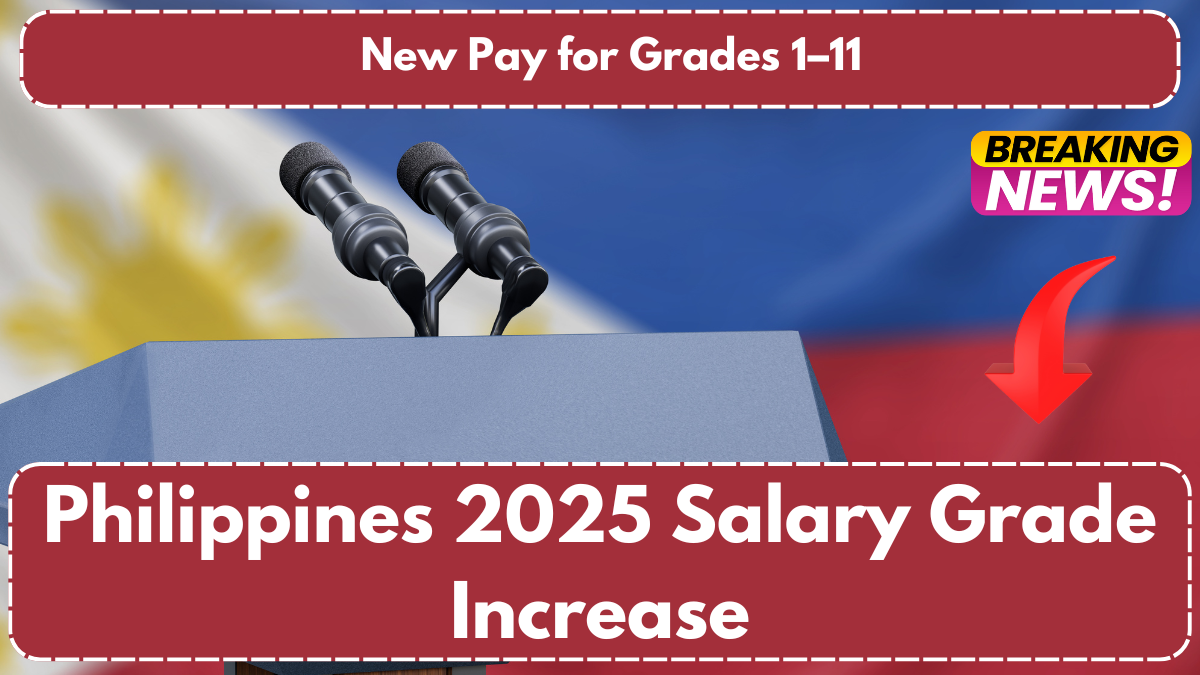In 2025, the Philippine government continued its commitment to improving public sector compensation by rolling out the second tranche of the Salary Standardization Law VI (SSL VI). This multi-year initiative seeks to bridge the pay gap between government and private sector employees, address inflationary effects on wages, and ensure fair compensation for public servants. With the second tranche taking effect on January 1, 2025, significant salary adjustments have been implemented, benefiting employees from salary grades 1 to 11.

Overview of Salary Standardization Law VI (SSL VI)
SSL VI is a four-year salary adjustment program covering the period from 2024 to 2027. It aims to provide gradual salary increases while maintaining economic sustainability. The implementation schedule is structured as follows:
- First Tranche: Implemented in January 2024
- Second Tranche: Effective January 2025
- Third Tranche: Scheduled for January 2026
- Fourth Tranche: Final implementation in January 2027
This phased approach ensures steady increases without imposing a financial burden on the national budget.
New Salary Rates for Government Employees (Grades 1-11) in 2025
Under the second tranche of SSL VI, government employees from salary grades 1 to 11 have received salary increases aimed at enhancing their economic well-being. The updated salary structure is outlined below:
| Salary Grade | 2024 Monthly Salary (PHP) | 2025 Monthly Salary (PHP) | Increase (%) |
|---|---|---|---|
| 1 | 13,000 | 14,061 | 8.16% |
| 2 | 13,819 | 14,818 | 7.23% |
| 3 | 14,678 | 15,586 | 6.18% |
| 4 | 15,586 | 16,543 | 6.14% |
| 5 | 16,543 | 17,553 | 6.11% |
| 6 | 17,553 | 18,620 | 6.08% |
| 7 | 18,620 | 19,744 | 6.04% |
| 8 | 19,744 | 21,211 | 7.43% |
| 9 | 21,211 | 23,176 | 9.26% |
| 10 | 23,176 | 25,586 | 10.39% |
| 11 | 25,586 | 27,000 | 5.53% |
These adjustments highlight the government’s focus on supporting lower and mid-level employees, ensuring they receive competitive salaries in line with economic changes.
Salary Growth Analysis (2024-2025)
The salary increases vary depending on the employee’s salary grade. For example:
- Salary Grade 1 employees experienced an 8.16% increase from PHP 13,000 in 2024 to PHP 14,061 in 2025.
- Salary Grade 5 employees saw a 6.11% increase, moving from PHP 16,543 to PHP 17,553.
- Salary Grade 10 received a significant 10.39% boost, rising from PHP 23,176 to PHP 25,586.
These targeted increases reflect the government’s strategy to prioritize fair and competitive compensation across all levels.
Additional Benefits and Allowances
Apart from salary hikes, SSL VI introduces various financial perks to help government workers manage professional and personal expenses:
- Medical Allowance: PHP 7,000 annually for healthcare-related costs.
- Clothing/Uniform Allowance: PHP 7,000 per year to cover work attire expenses.
These additional benefits aim to reduce out-of-pocket expenses and enhance employees’ overall financial security.
Performance-Based Incentives
To encourage efficiency and high performance in the public sector, SSL VI includes several performance-related incentives:
- Representation and Travel Allowance (RATA): Provided to eligible officials to support travel and work-related expenses.
- Performance-Based Bonus (PBB): Rewarded to employees who achieve or exceed performance targets set by their respective agencies.
- Collective Negotiation Agreement (CNA) Incentive: Granted to government agencies that demonstrate exceptional efficiency and productivity.
These incentives are designed to promote accountability and motivate employees to perform at their best.
Local Government Unit (LGU) Implementation
The implementation of SSL VI salary increases varies across Local Government Units (LGUs), depending on their financial capacity:
- First-Class Provinces: Can implement up to 100% of the prescribed salary increases.
- Second-Class Provinces: Typically cover around 95% of the salary adjustments.
- Third-Class Municipalities: Expected to implement approximately 85% of the salary hikes.
- Fourth-Class Municipalities: May adopt about 80% of the prescribed increases.
This tiered system ensures that LGUs can implement the salary adjustments in a financially responsible manner.
Funding and Fiscal Responsibility
The salary increases under SSL VI are funded through two primary sources:
- Miscellaneous Personnel Benefits Fund (MPBF): Ensures that the national government can finance salary adjustments without financial strain.
- Agency Budget Allocations: Government agencies use their own budget allocations to supplement the salary hikes where necessary.
This funding approach guarantees sustainable salary increases without jeopardizing the country’s financial stability.
Frequently Asked Questions (FAQs)
Q1: Who benefits the most from SSL VI salary adjustments?
A: Employees in entry-level and mid-level government positions benefit the most, as they receive the highest percentage increases.
Q2: How does SSL VI compare to previous salary standardization laws?
A: SSL VI introduces more structured and equitable salary increments, addressing inflation and bridging the pay gap with the private sector more effectively.
Q3: Will future salary increases be guaranteed after SSL VI?
A: Future salary adjustments will depend on economic conditions and government policies beyond 2027.
Q4: How are LGUs able to implement salary increases?
A: LGUs implement SSL VI salary hikes based on their financial classification, ensuring that salary adjustments are sustainable.
Q5: What is the impact of performance-based incentives?
A: These incentives enhance productivity, motivation, and accountability among government employees, leading to better public service delivery.
By implementing SSL VI, the government aims to create a more competitive and fair compensation structure for public servants, ensuring their financial stability and professional growth.
For More Information Click Here
Akesh is a furniture expert with years of experience in design and craftsmanship. Specializing in sustainable materials, he shares his expertise to help people create stylish and functional living spaces.
